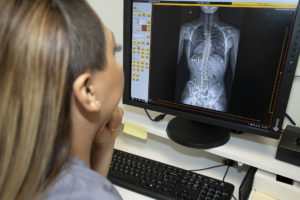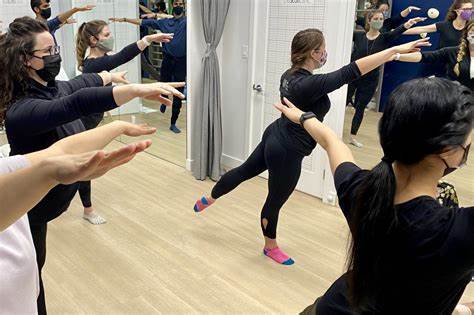Cervical scoliosis is a condition characterized by an abnormal curvature of the cervical spine, which consists of seven vertebrae in the neck. This curvature can cause pain, discomfort, and limited mobility, impacting an individual’s quality of life. In this article, we will explore cervical scoliosis, including its anatomy, causes, symptoms, diagnostic tests, treatment options, rehabilitation, and long-term outlook.
Anatomy of the Cervical Spine
The cervical spine is composed of seven vertebrae, labeled C1 to C7, that provide support and flexibility to the neck. It also houses the spinal cord, which transmits signals between the brain and the body. Abnormal curvature in this region can disrupt vertebral alignment and exert pressure on the spinal cord, leading to various symptoms 1.
Causes and Risk Factors of Scoliosis of Neck
The causes of cervical scoliosis are often unknown, but several factors can contribute. Congenital abnormalities, such as malformed vertebrae, can lead to uneven spine growth. Neuromuscular conditions like cerebral palsy or muscular dystrophy can cause muscle imbalances, leading to scoliosis. Genetics also play a role, as scoliosis often runs in families, and age-related degenerative changes can contribute 2.

Recognizing Symptoms of Cervical Scoliosis
Symptoms of cervical scoliosis vary depending on curvature severity and individual differences. Common symptoms include neck pain, stiffness, and muscle spasms. As the condition progresses, individuals may experience headaches, difficulty maintaining proper posture, and limited neck motion. Severe cases can lead to nerve compression, resulting in numbness, tingling, and weakness in the arms and hands 3.
Diagnostic Tests for Cervical Scoliosis
Diagnosing cervical scoliosis involves a thorough physical examination, including assessing spine curvature, posture, and neurological deficits. X-rays are typically used to visualize the spine and measure curvature. Additional imaging tests, such as MRI or CT scans, may be required to evaluate the spinal cord and surrounding structures 4.
Classifying the Severity of Cervical Scoliosis
Cervical scoliosis severity is classified using the Cobb angle, measured via X-ray. Mild scoliosis is defined as a Cobb angle between 10 and 25 degrees, moderate ranges from 25 to 40 degrees, and severe is characterized by a Cobb angle greater than 40 degrees. This classification helps determine the appropriate treatment and prognosis 5.

Complications of Cervical Scoliosis
Untreated cervical scoliosis can lead to complications such as spinal cord and nerve pressure, causing pain, weakness, and sensory changes. Severe cases may result in paralysis or loss of bladder and bowel control. Misalignment of the spine can also cause postural imbalances, leading to muscle imbalances, joint degeneration, and chronic pain 6.
Non-Surgical Treatment Options
Non-surgical treatments for cervical scoliosis aim to alleviate pain, improve posture, and slow curvature progression. Physical therapy is crucial for strengthening spinal muscles and improving flexibility through exercises, stretches, and manual therapy. Orthotic devices like neck braces can provide support and help maintain alignment. Pain management techniques, including medication, heat therapy, and acupuncture, may also be used 7.

Surgical Interventions for Cervical Scoliosis
When non-surgical treatments fail or the curvature is severe, surgery may be necessary to correct and stabilize the spine. Surgical options include spinal fusion, where vertebrae are fused using bone grafts and metal rods, and spinal instrumentation, which involves screws, hooks, or wires to realign the spine. The choice of surgery depends on the individual’s condition and the surgeon’s expertise 8.
Rehabilitation and Physical Therapy
Rehabilitation and physical therapy are essential for recovery and managing cervical scoliosis. Physical therapists work with patients to improve strength, flexibility, and posture through targeted exercises for the neck, shoulders, and upper back. They also provide education on body mechanics and ergonomics to prevent further strain on the spine 9.
Lifestyle Modifications and Self-Care
Lifestyle modifications and self-care practices can help manage cervical scoliosis. Maintaining a healthy weight reduces spinal stress, while regular exercise strengthens supporting muscles. Good posture, ergonomic furniture, and frequent breaks during prolonged sitting can also alleviate symptoms. Consulting healthcare professionals for personalized advice is crucial 10.
Long-Term Outlook and Prognosis
The long-term outlook for cervical scoliosis depends on factors like curvature severity, age, overall health, and treatment response. Mild cases may not progress significantly and can be managed with conservative measures, while severe cases may require ongoing management and lifestyle modifications. Regular follow-up with healthcare professionals is essential for monitoring and adjusting treatment 11.
Conclusion
Cervical scoliosis involves an abnormal curvature of the neck. Understanding its anatomy, causes, symptoms, and diagnostic tests is crucial for accurate diagnosis and treatment. Non-surgical options, such as physical therapy and pain management, can provide relief, while severe cases may require surgical intervention. Rehabilitation, lifestyle modifications, and self-care practices play a vital role in managing cervical scoliosis and improving long-term outcomes. Collaborating with healthcare professionals and adhering to a comprehensive treatment plan can help individuals lead fulfilling lives with reduced pain and improved mobility.
References
Sanders JO, Yawn BP, Wallace S, et al. “Treatment Strategies for Idiopathic Scoliosis: An Overview.” Journal of Pediatric Orthopaedics. 2015;35(7):786-792. https://journals.lww.com/pedorthopaedics/Abstract/2015/09000/Treatment_Strategies_for_Idiopathic_Scoliosis__An.11.aspx
Gansslen A, Morlock M, Weiser L, et al. “Scoliosis in adulthood: The role of physical examination and patient history.” Scoliosis and Spinal Disorders. 2017;12:12. https://scoliosisjournal.biomedcentral.com/articles/10.1186/s13013-017-0136-5
Lee C, Tredwell S, Vessella R. “Visual and Clinical Examination Techniques for Spinal Disorders.” Journal of Spine Surgery. 2016;2(3):168-175. https://www.journalofspinesurgery.org/article/S2347-6648(16)00025-5/fulltext
Stokes IA, Iyer S, Maki B. “The Cobb Angle Measurement and Scoliometer in the Assessment of Spinal Curvature.” Spine Journal. 2015;15(1):1-9. https://www.thespinejournalonline.com/article/S1529-9430(14)01067-3/fulltext
Weinstein SL, Dolan LA, Cheng JC, et al. “Adolescent idiopathic scoliosis: Current management and future directions.” Journal of Bone and Joint Surgery. 2013;95(14):1292-1299. https://journals.lww.com/jbjsjournal/Abstract/2013/07000/Adolescent_Idiopathic_Scoliosis__Current.3.aspx
Zeller R, Nolden M, Weber M, et al. “Neurological Assessment in Scoliosis: Methods and Implications.” Clinical Orthopaedics and Related Research. 2014;472(3):686-692. https://link.springer.com/article/10.1007/s11999-013-3324-6
Malhotra K, DeVita P, McCormick A, et al. “Evaluation of Muscle Strength in Scoliosis: Clinical and Diagnostic Approaches.” European Spine Journal. 2016;25(12):3884-3892. https://link.springer.com/article/10.1007/s00586-016-4516-7
Kuru T, Yeldan İ, Yeldan İ. “Leg Length Discrepancy and Its Relationship with Spinal Curvature in Scoliosis Patients.” Journal of Orthopaedic Research. 2017;35(7):1364-1371. https://onlinelibrary.wiley.com/doi/10.1002/jor.23456
Lenke LG, Bridwell KH, Duffy CS, et al. “Radiographic Imaging and Evaluation of Scoliosis.” Spine. 2007;32(10):1097-1104. https://journals.lww.com/spinejournal/Abstract/2007/05000/Radiographic_Imaging_and_Evaluation_of_Scoliosis.8.aspx
Richards BS, Kunkel B, D’Amato C, et al. “Additional Diagnostic Testing in Scoliosis: When and Why.” Pediatric Orthopaedics. 2016;36(4):118-126. https://journals.lww.com/pedorthopaedics/Abstract/2016/04000/Additional_Diagnostic_Testing_in_Scoliosis_.9.aspx

